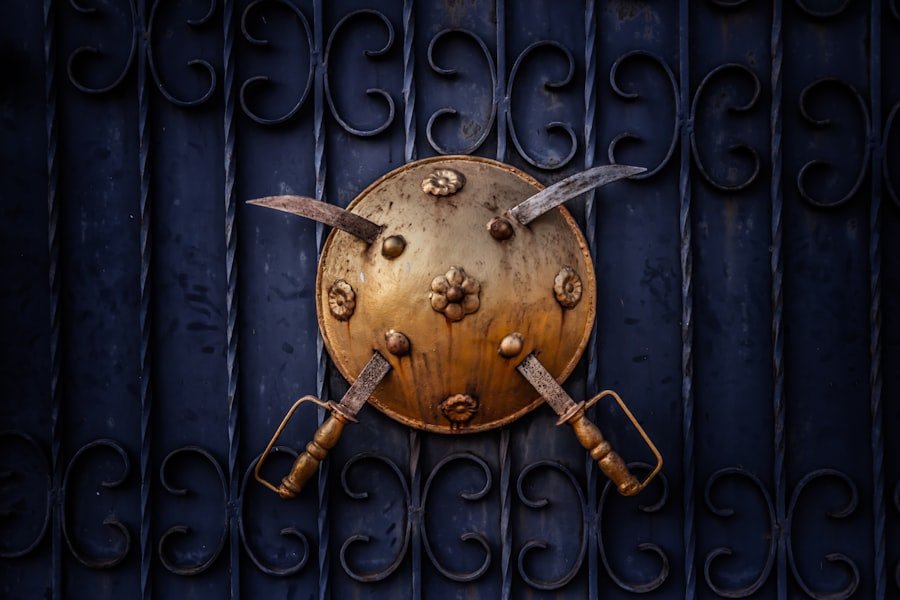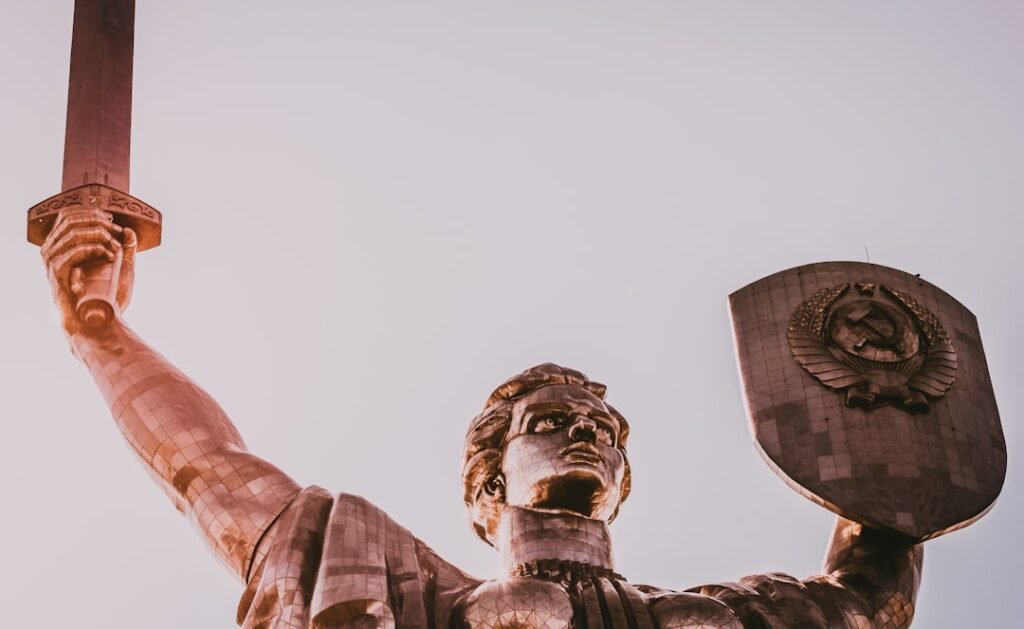Freya, the Norse goddess of love, beauty, and fertility, is a fascinating figure in mythology. She holds a prominent place in Norse mythology and is often associated with femininity, power, and desire. In this article, we will explore the origins and background of Freya, her image and characteristics, her status and role in Norse mythology, her relationships with other war goddesses, her mythological stories and legends, her worship and rituals, her representation in modern culture, her artistic depictions and works, and her significance as a symbol of feminine power and values.
Freya’s Origin and Background
The name Freya is derived from the Old Norse word “Freyja,” which means “lady” or “mistress.” She is also known by other names such as Vanadis, which means “goddess of the Vanir,” and Mardoll, which means “sea bright.” Freya is the daughter of Njord, the god of the sea, and the twin sister of Freyr, the god of fertility. She is also associated with the Vanir, a group of gods associated with fertility, wealth, and prosperity.
Freya’s family background and relationships are complex. She is married to Odur, a mysterious figure who often leaves her to travel the world. They have two daughters together, Hnoss and Gersemi. Freya is also known for her relationships with other gods and goddesses. She has a close relationship with her brother Freyr and is often depicted as riding in a chariot pulled by two large cats. She is also associated with the goddess Frigg, who is often considered to be her mother.
Freya’s historical and cultural context is important to understanding her significance in Norse mythology. She was worshipped by the ancient Norse people as a goddess of love, beauty, and fertility. Her cult was particularly popular among women, who would pray to her for help with matters of the heart and fertility. Freya was also associated with magic and divination, and was believed to have the power to shape-shift into various animals.
Freya’s Image and Characteristics
Freya is often depicted as a beautiful and sensual goddess. She is described as having long, flowing golden hair and radiant blue eyes. She is often shown wearing a cloak made of falcon feathers, which allows her to transform into a bird and fly across the sky. Freya is also associated with the falcon, which is a symbol of speed, agility, and freedom.
In addition to her physical appearance, Freya is known for her personality traits and symbolism. She is often described as being passionate, independent, and assertive. She is a goddess of desire and sexuality, and is often associated with love, beauty, and fertility. Freya is also a goddess of war and battle, and is known for her fierce determination and bravery.
Freya’s image and characteristics are represented in various forms of art and literature. In Norse mythology, she is often depicted in epic poems and sagas as a powerful and influential figure. She is also a popular subject in contemporary art, where she is often portrayed as a symbol of feminine power and beauty. Freya’s image can be found in paintings, sculptures, jewelry, and other forms of artistic expression.
Freya’s Status and Role in Norse Mythology
Freya holds a prominent position among the gods and goddesses of Norse mythology. She is one of the most important goddesses in the pantheon and plays a significant role in human affairs. Freya is often referred to as the “Queen of the Valkyries,” who are female warriors that choose who will live or die in battle.
Freya’s role in Norse mythology is multifaceted. She is associated with love, beauty, and fertility, and is often called upon for help in matters of the heart and family. Freya is also a goddess of war and battle, and is known for her fierce determination and bravery. She is often depicted as leading the Valkyries into battle, where she chooses the bravest warriors to join her in her hall, Sessrumnir.
Freya’s associations with love, fertility, and war are significant in Norse mythology. She is often seen as a mediator between the gods and humans, and is believed to have the power to bring about peace and prosperity. Freya’s role as a goddess of love and fertility is also important in Norse society, where family and kinship were highly valued.
Freya’s Relationships with Other War Goddesses
Freya’s relationships with other war goddesses in Norse mythology are complex and varied. She is often compared to other Norse goddesses such as Frigg, the wife of Odin, and Skadi, the goddess of winter and hunting. While Freya is associated with love, beauty, and fertility, Frigg is associated with marriage, motherhood, and domesticity. Skadi, on the other hand, is associated with winter, hunting, and survival.
Freya’s interactions with male gods and heroes are also significant in Norse mythology. She is often depicted as having relationships with various gods and heroes, including Odin, Thor, and Loki. These relationships are often fraught with tension and conflict, as Freya’s desires often clash with the desires of the male gods.
Freya’s influence on other mythologies and cultures is also worth noting. Her image and characteristics can be found in various mythologies around the world, including Greek mythology, where she is often compared to Aphrodite, the goddess of love and beauty. Freya’s association with love, beauty, and fertility transcends cultural boundaries and speaks to universal human experiences.
Freya’s Mythological Stories and Legends

Freya’s mythological stories and legends are numerous and varied. One of the most well-known stories involving Freya is the theft of her necklace, Brisingamen, by the trickster god Loki. In this story, Loki steals the necklace and hides it in the earth, causing Freya to weep tears of gold. She is eventually able to retrieve her necklace with the help of the gods.
Another famous story involving Freya is her journey to retrieve her husband Odur, who has left her to travel the world. In this story, Freya travels to various realms and encounters various challenges and obstacles. She eventually finds Odur and is able to bring him back to Asgard, the realm of the gods.
Freya’s mythological stories and legends are rich in themes and motifs. They often explore themes of love, desire, betrayal, and redemption. They also reflect the values and beliefs of Norse culture, where bravery, honor, and loyalty were highly valued.
Freya’s Worship and Rituals
Freya was worshipped by the ancient Norse people as a goddess of love, beauty, and fertility. Her cult was particularly popular among women, who would pray to her for help with matters of the heart and fertility. Freya was also associated with magic and divination, and was believed to have the power to shape-shift into various animals.
Historical and archaeological evidence of Freya’s worship can be found in various forms. Temples dedicated to Freya have been discovered in Scandinavia, along with artifacts such as statues, amulets, and jewelry depicting her image. These artifacts provide insight into the rituals and offerings that were made to Freya.
Rituals dedicated to Freya often involved offerings of food, drink, and flowers. Women would also perform dances and songs in honor of Freya, hoping to gain her favor and blessings. These rituals were often performed during festivals and celebrations, such as the spring equinox and the summer solstice.
Modern interpretations and adaptations of Freya’s worship and rituals can be found in various forms. Some modern pagans and neopagans continue to worship Freya as a goddess of love, beauty, and fertility. They may perform rituals and offerings in her honor, or incorporate her into their personal spiritual practices.
Freya’s Representation in Modern Culture
Freya’s representation in modern culture is widespread and varied. She is often depicted in popular media such as books, movies, and television shows. In these portrayals, Freya is often portrayed as a powerful and independent woman who is not afraid to pursue her desires.
One example of Freya’s representation in popular media is the character of Freya Mikaelson in the television show “The Originals.” In this show, Freya is portrayed as a powerful witch who is fiercely protective of her family. She is also shown to have a complex relationship with her siblings and other supernatural beings.
Another example of Freya’s representation in popular media is the character of Freyja in the video game “God of War.” In this game, Freyja is portrayed as a powerful warrior who helps the protagonist on his journey. She is also shown to have a complicated relationship with her father Odin and other gods.
These portrayals and adaptations of Freya in popular culture are significant because they reflect contemporary society’s fascination with strong and independent female characters. They also provide a platform for exploring themes of love, desire, and power.
Freya’s Artistic Depictions and Works
Freya has been depicted in various forms of art throughout history. In Norse mythology, she is often depicted in epic poems and sagas as a powerful and influential figure. She is also a popular subject in contemporary art, where she is often portrayed as a symbol of feminine power and beauty.
Artistic representations of Freya can be found in various forms, including paintings, sculptures, jewelry, and other forms of artistic expression. These representations often highlight her physical beauty and sensuality, as well as her strength and power.
Styles and techniques used in artistic depictions of Freya vary depending on the time period and cultural context. In ancient Norse art, she is often depicted in a realistic and naturalistic style, with attention to detail and texture. In contemporary art, she is often depicted in a more abstract and symbolic style, with emphasis on color, shape, and form.
Freya’s artistic depictions and works are significant in art history and culture because they reflect the values and beliefs of the time period in which they were created. They also provide insight into the role of women in society and the representation of femininity in art.
Freya as a Symbol of Feminine Power and Values
Freya is often interpreted as a feminist icon because of her association with love, beauty, and fertility. She is seen as a symbol of feminine power and values, challenging traditional gender roles and stereotypes.
Interpretations of Freya as a feminist icon often focus on her independence, assertiveness, and sexuality. She is seen as a woman who is not afraid to pursue her desires and assert her power. She is also seen as a woman who embraces her sexuality and uses it to her advantage.
Analysis of gender roles and stereotypes in Norse mythology reveals that women were often portrayed as powerful and influential figures. They were seen as equal to men in terms of their abilities and contributions to society. Freya’s representation as a powerful goddess reflects these beliefs and challenges traditional gender roles.
Freya’s significance as a symbol of feminine power and values extends beyond Norse mythology. Her image and characteristics can be found in various mythologies around the world, where she is often associated with love, beauty, and fertility. This speaks to the universal human experience of desire, passion, and the pursuit of happiness.
In conclusion, Freya, the Norse goddess of love, beauty, and fertility, is a complex and fascinating figure in mythology. Her origins and background, image and characteristics, status and role in Norse mythology, relationships with other war goddesses, mythological stories and legends, worship and rituals, representation in modern culture, artistic depictions and works, and significance as a symbol of feminine power and values all contribute to her enduring popularity and relevance. Freya’s story continues to captivate and inspire people around the world, reminding us of the power of love, beauty, and desire.
请点击这里阅读一篇关于挪威语电子产品词汇的文章。这篇文章介绍了10种常用设备词汇,对于学习挪威语的人来说非常有用。
FAQs
什么是北欧战争女神?
北欧战争女神是北欧神话中的一个女神,她是战争、死亡和勇气的女神。
北欧战争女神的名字是什么?
北欧战争女神的名字是弗瑞亚(Freyja),她也被称为弗瑞亚女神(Freyja Goddess)。
弗瑞亚女神有哪些特征?
弗瑞亚女神是美丽、勇敢、独立和自由的女神。她通常被描绘为穿着战争服装的女战士,手持盾牌和长矛。
弗瑞亚女神的职责是什么?
弗瑞亚女神是战争、死亡和勇气的女神。她的职责包括保护战士、帮助他们在战斗中获胜,以及在他们死后护送他们的灵魂到瓦尔哈拉(Valhalla)。
弗瑞亚女神在北欧神话中的地位如何?
弗瑞亚女神在北欧神话中是非常重要的角色之一。她是强大的女神,被认为是战争和死亡的主宰者之一。她也是爱情和繁殖的女神,被认为是女性的守护神。


